Related Research Articles

Looney Tunes is an American animated franchise produced and distributed by Warner Bros. It began as a series of short films that originally ran from 1930 to 1969, concurrently with its partner series Merrie Melodies, during the golden age of American animation. Following a revival in the late 1970s, new shorts were released as recently as 2014. The two series introduced a large cast of characters, including Bugs Bunny, Daffy Duck, and Porky Pig. The term Looney Tunes has since been expanded to also refer to the characters themselves.

"Rock Around the Clock" is a rock and roll song in the 12-bar blues format written by Max C. Freedman and James E. Myers in 1952. The best-known and most successful rendition was recorded by Bill Haley & His Comets in 1954 for American Decca. It was a number one single for two months and did well on the United Kingdom charts; the recording also reentered the UK Singles Chart in the 1960s and 1970s.

John Avery Lomax was an American teacher, a pioneering musicologist, and a folklorist who did much for the preservation of American folk music. He was the father of Alan Lomax, John Lomax Jr. and Bess Lomax Hawes, also distinguished collectors of folk music.
Rhumba, also known as ballroom rumba, is a genre of ballroom music and dance that appeared in the East Coast of the United States during the 1930s. It combined American big band music with Afro-Cuban rhythms, primarily the son cubano, but also conga and rumba. Although taking its name from the latter, ballroom rumba differs completely from Cuban rumba in both its music and its dance. Hence, authors prefer the Americanized spelling of the word (rhumba) to distinguish between them.

Benjamin Bernard Selvin was an American musician, bandleader, and record producer. He was known as the Dean of Recorded Music.
"The Lambeth Walk" is a song from the 1937 musical Me and My Girl. The song takes its name from a local street, Lambeth Walk, once notable for its street market and working-class culture in Lambeth, an area of London. The tune gave its name to a Cockney dance made popular in 1937 by Lupino Lane.

The Grizzly Bear is an early 20th-century dance style. It originated in San Francisco, along with the Bunny Hug and Texas Tommy and was also done on the Staten Island ferry boats in the 1900s. It has been said that dancers John Jarrott and Louise Gruenning introduced this dance as well as the Turkey Trot at Ray Jones Café in Chicago, Illinois around 1909. The Grizzly Bear was first introduced to Broadway audiences in the Ziegfeld Follies of 1910 by Fanny Brice.
The Texas Tommy is a vigorous social dance for couples that originated in San Francisco in the early twentieth century.
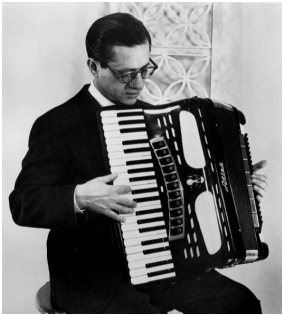
John Serry Sr. was an American concert accordionist, arranger, composer, organist, and educator. He performed on the CBS Radio and Television networks and contributed to Voice of America's cultural diplomacy initiatives during the Golden Age of Radio. He also concertized on the accordion as a member of several orchestras and jazz ensembles for nearly forty years between the 1930s and 1960s.

One O'Clock Lab Band is an ensemble of the Jazz Studies division at the University of North Texas College of Music in Denton, Texas. Since the 1970s, the band's albums have received seven Grammy Award nominations, including two for Lab 2009. Steve Wiest directed the band from 2008 to 2014. Jay Saunders became interim director in 2014.
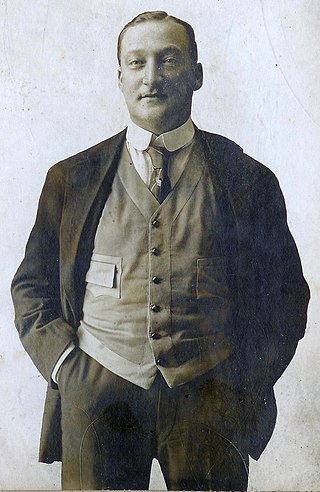
Alexander Hurley was an English music hall singer, and Marie Lloyd's second husband.
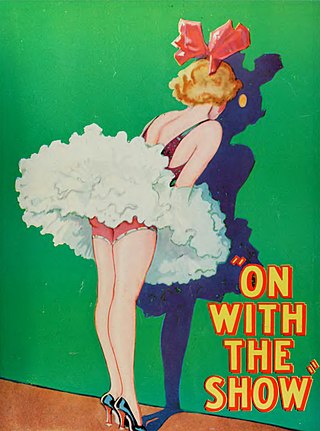
On with the Show! is a 1929 American pre-Code musical film produced by Warner Bros. Filmed in two-color Technicolor, the film became the first all-talking, all-color feature-length film, and the second color film released by Warner Bros.; the first was the partly color musical The Desert Song (1929).
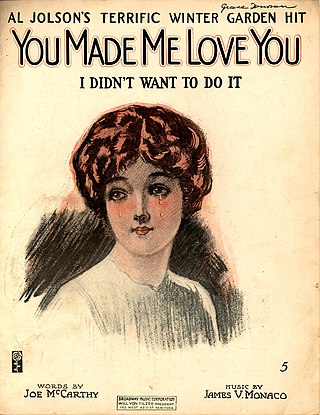
"You Made Me Love You (I Didn't Want to Do It)" is a popular song from 1913 composed by James V. Monaco with lyrics by Joseph McCarthy. It was introduced by Al Jolson in the Broadway revue The Honeymoon Express (1913), and used in the 1973 revival of the musical Irene.
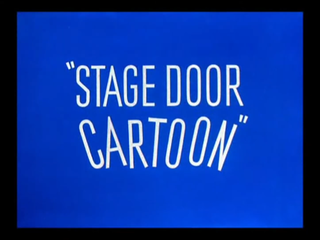
Stage Door Cartoon is a 1944 Merrie Melodies cartoon directed by Friz Freleng. The short was released on December 30, 1944, and features Bugs Bunny and Elmer Fudd.

Sunny is a 1941 American musical film directed by Herbert Wilcox and starring Anna Neagle, Ray Bolger, John Carroll, Edward Everett Horton, Grace Hartman, Paul Hartman, Frieda Inescort, and Helen Westley. It was adapted by Sig Herzig from the Jerome Kern-Oscar Hammerstein II musical play Sunny.

Looney Tunes Golden Collection: Volume 2 is a DVD box set that was released by Warner Home Video on November 2, 2004. It contains 60 Looney Tunes and Merrie Melodies cartoons and numerous supplements.

Bunny Dips Into Society, also known as Bunny and the Bunny Hug, is a short American silent comedy film.

Lucy Nicolar Poolaw, also called Wa-Tah-Wa-So and billed as Princess Watahwaso, was a Penobscot and a performer on the Chautauqua and lyceum circuits.
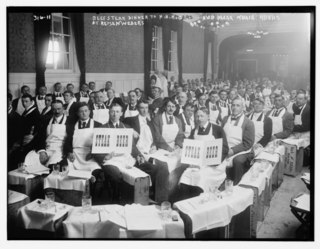
Reisenweber's Cafe, also known as Reisenweber's Restaurant or simply Reisenweber's, was a restaurant, nightclub, and hotel in Columbus Circle, Manhattan, on the intersection of Eighth Ave and 58th Street, from 1856/7 to 1922.
Music for the Dance No. 2 is a composition for piano by American composer Leonard Bernstein. It was finished in 1938.
References
- ↑ Elizabeth Aldrich (1998). "Western Social Dance: An Overview of the Collection". An American Ballroom Companion: Dance Instruction Manuals, ca. 1490 to 1920. Library of Congress.
- ↑ "Commissioner Blaylock Advocates Drastic Regulation of Dallas Dance Halls". Dallas Daily Times Herald. April 5, 1913. Archived from the original (a copy on the Dallas History Message Board) on July 8, 2007. Retrieved June 14, 2008.
- ↑ "The Bunny Hug. The Craze of the Day". The Lester S. Levy Sheet Music Collection. Sheridan Libraries, Johns Hopkins University . Retrieved June 18, 2019.